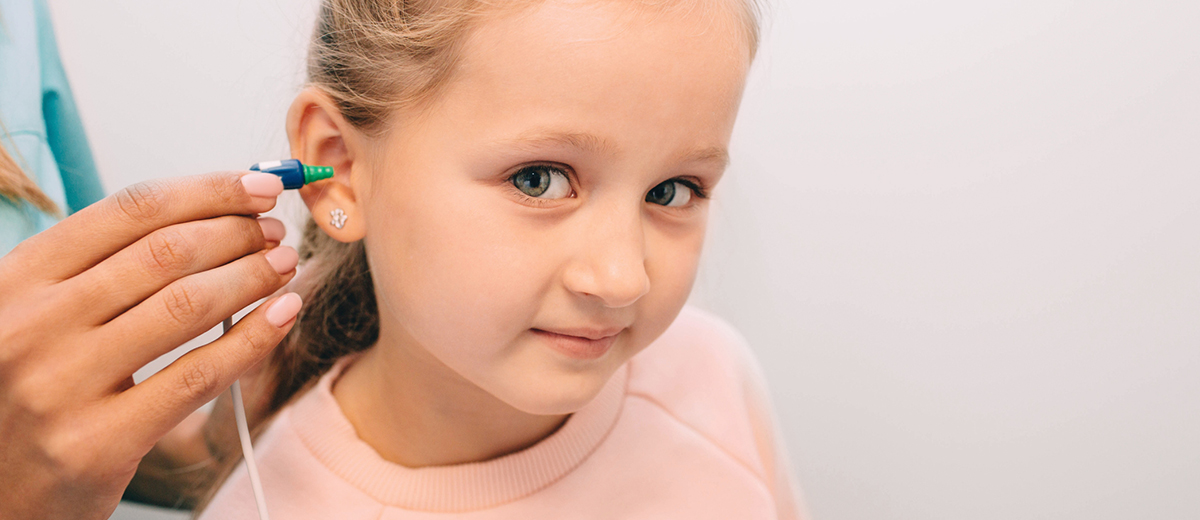By now you know just how important hearing screening is when it comes to detecting potential issues in children. Our previous blogs in the Hearing 101 series addressed pure tone audiometry and tympanometry – two common hearing screening methods. In this blog we’ll review the otoacoustic emissions test (OAE test), another evidence‐based hearing screening method that can be used in audiological screenings.
The Anatomy of the Ear
Ears are made up of three parts: the outer, the middle, and the inner ear. As described by the American Speech-Language-Hearing Association, the OAE test is used to find out how well the inner ear, or cochlea, works. It measures otoacoustic emissions, or OAEs, which are sounds given off by the inner ear when responding to a sound. Hair cells in the inner ear respond to sound by vibrating; the vibration produces a very quiet sound that echoes back into the middle ear. This sound is the otoacoustic emission that is being measured with an OAE test.
How to Perform an OAE Test
To perform an OAE test, a probe is placed in the ear and puts sounds into the ear to measure the OAE sounds that come back. When screening, you do not have to do anything. The results simply display on the OAE device. If hearing is normal, OAEs will be produced. If hearing loss is greater than 25 to 30 decibels (dB), these very soft sounds will not be produced.
The OAE test can also detect if there is a blockage in the outer or middle ear. If there’s a blockage, no sounds will be able to get through to the inner ear, thus no vibration or sounds will come back. One example of this would be if a child has otitis media or fluid in the middle ear.
Is an OAE Test a Test of Hearing?
The OAE test is an assessment of cochlear outer hair cell function, not hearing levels. On the other hand, pure tone audiometry does test hearing sensitivity as a measurement of Hertz (HZ) and decibels (dB). Keep in mind that the purpose of an OAE test is to quickly and accurately separate individuals who may have a hearing loss from those who do not.
To learn more about the implementation and improvement of comprehensive and effective Early Hearing Detection and Intervention (EHDI) systems, click here.
To shop MacGill’s selection of otoacoustic emissions (OAE) screeners, click here and here.





